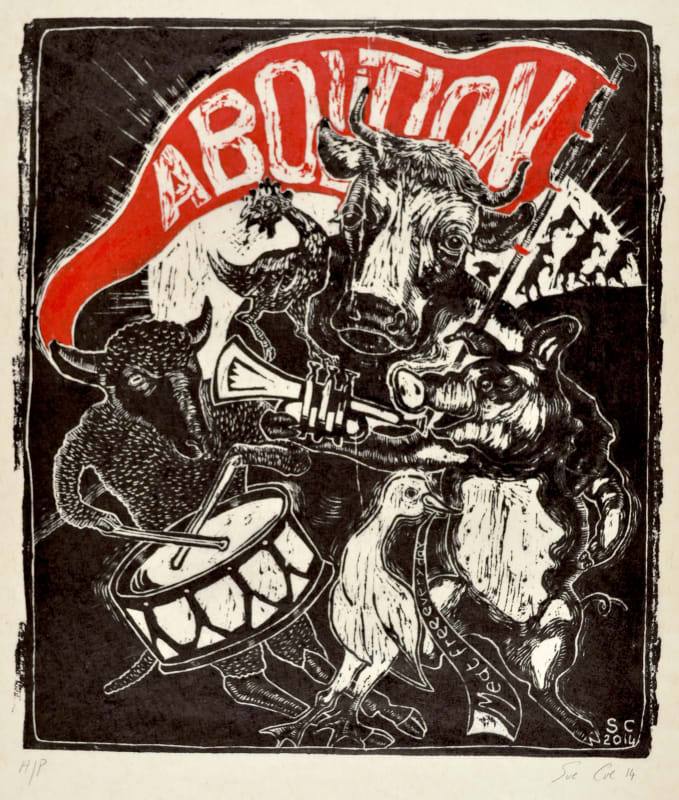You might hear some argument over the statement “All good art is political,” the theme of Galerie St. Etienne’s exhibition of the same name (until February 19, 2018) featuring Käthe Kollwitz (1867–1945) and Sue Coe (b. 1951). It is a quotation from author Toni Morrison that reads:
"All good art is political! There is none that isn’t. And the ones that try hard not to be political are political by saying, “We love the status quo.” … I’m not interested in art that is not in the world."
Kollwitz was among the most influential Weimar artists. She spoke humanity to power. She taught me that art had a greater purpose than filling corporate walls with attractions. Coe, with whom I worked as an illustrator, has long kept Kollwitz’s spirit (and that of other such influential graphic commentators) alive. She wields the pen and brush as an orator uses the voice. This exhibition is a good reminder that we are living in dangerous socio-political times. Its is important to appreciate this art for its nourishment and inspiration when freedom is at risk. It couldn’t be said better than this:
Prior to the twentieth century, art’s political grounding was taken for granted. Most European art—religious scenes, portraits and history painting—affirmed the values and legitimacy of the ruling class. As hereditary monarchs came under fire, first in the French Revolution and then in the more widespread but short-lived revolts of 1848, artists gradually lost their aristocratic support base. Painters like David, Ingres and Delacroix embraced the new order, helping shape the myth of modern France as a land of liberty, fraternity and equality. Others assumed a more critical stance. Daumier, whose caricatures at one point landed him in prison, lobbied for greater social justice. Goya, though employed by the Spanish court, created the satirical etching cycle Caprichos and, in response to Napoléon’s aggressive imperialism, the scathing Disasters of War. Egalitarian idealism, coupled with growing social unrest, prompted artists more frequently to depict peasants and workers. Art remained rooted in political realities, but the emphasis shifted."
